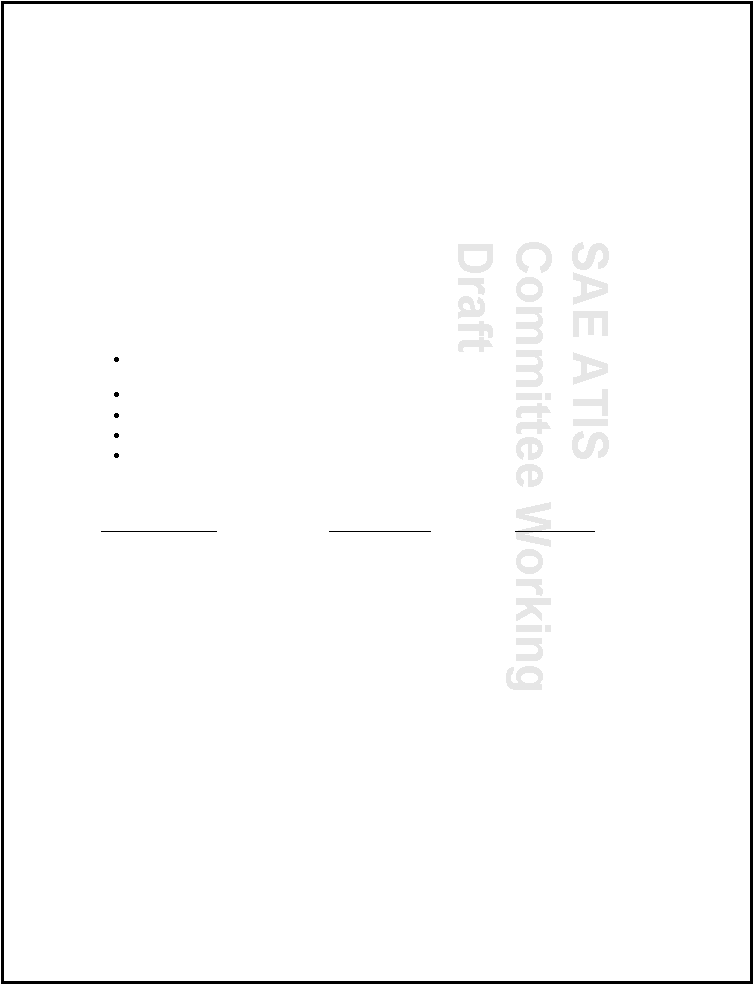
ITIS Phrase Tables, Draft [issued: 04-11-09]
-
222 -
This is a draft document of the SAE ATIS committee, subject to change.
8.5
Encoding Direction and Distance Sign Patterns
Signs of this type (typically denoted a D category type in MUTCD) are typically expressed based on one of
the general patterns shown below. The object text varies and can include named objects (named streets,
locations, destinations) or roadway assets (stop signs, signals, branching points). The destination details
often include an exit and its name or number when used with major roadways. The immediate directions
can include (besides the obvious ahead, left, and right) descriptive terms for locations such as “next light”
etc. The optional distance codes follow the rules established for expressions of distance.
<object text><immediate direction><optional distance, value, units>
<direction or arrow><named object><destination details><optional distance, value, units>
The direction or arrow elements may consist of one or more direction arrows to indicate specific lanes or
directions. Such graphical elements are expressed in the ITIS categories MUTCD-Locations or Allowed-
Maneuvers and often rely on the precise position of the sign with respect to specific lanes of the roadway or
to specific signal heads in an intersection.
In constructing signs using these patterns the following rules shall be observed:
Graphical elements, i.e. arrows, (if present) which relate the expression to a specific roadway
asset (lane, signal, etc.) shall come first or last in order before the rest of the expression.
Use the named object category entries to set off and limit proper names of objects.
Use suitable MUTCD location categories for arrow unless a single lane is being described.
The unit’s term shall be present only when it is preceded by a numerical value.
The units of distance shall be presumed to be in miles if no units phrase is present.
Examples of proper encoding proper direction values:
Value to be expressed
Preferred Encoding
Byte Sequence
Westbound Route 66 10 miles ahead
westbound traffic, US route, n66, ahead, n10, miles
7997, 11779, 12610, 13569,
12554, 8712
Stop Ahead
stop, ahead
12294, 13569
Reduced speed Ahead
reduced speed, ahead
12302, 268, 13569
Right Lane End, Merge Left
right lane, ends, merge, left
8196, 13583, 7451, 13580
Golf Cart Crossing Ahead
golf cart, crossing, ahead
11052, 13585, 13569
Park and Ride Left
park and ride lot, left
8012, 13580
Shoulder Drop Off next 20 miles
shoulder, drop off, next, n20, miles
8027, 1059, 13582,
12564, 8712
Caution Shoulder Drop off
caution, shoulder , drop off
12330, 8027, 1059
Rest Stop Next Right
rest area, next, right
7986, 13582, 13579
Lane Arrows, I-10 Right Two Lanes
Interstate, n10, right two lanes
11781, 12554, 8200

